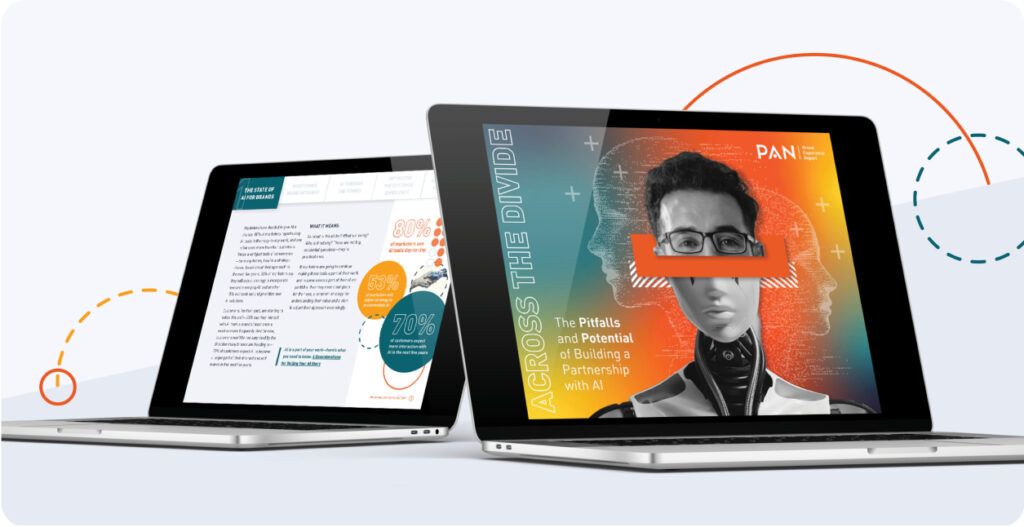Last week, I had the pleasure of hosting Halle Tecco, an entrepreneur and investor passionate about fixing healthcare, and Gabe Perna, Digital Health editor of Modern Healthcare, for a conversation on the trends, key challenges, and opportunities ahead in the digital health industry.

It was very insightful to hear the latest perspectives from these two industry bellwethers, and I was thrilled to invite our staff, clients and other industry colleagues and friends to not only hear the POVs but also gauge their sentiments via questions and polls. Check out the top takeaways from the conversation below.
Will 2024 be the year of the digital health bounce-back?
We couldn’t appropriately start our conversation without setting the stage and discussing the state of the market. At a high level, we’ve seen funding in digital health drop considerably over the past few years, a decrease in IPOs (and failure on the part of some companies who have gone public), and reductions in force (RIFs). However, on the flip side, there has been a tremendous amount of innovation and advancement in the sector, benefiting the efficacy and efficiency of care.
We’re facing the impact of companies who have failed before us. There is a blast radius, which is a negative because people are more worried about investing in digital health, but we’ve also increased the quality overall. The stronger companies are what’s left, which is ultimately better for everyone.
So how did we get here, and where does that leave us today? According to both Gabe and Halle, we find ourselves in a very different position than we did in 2021, when growth was largely being driven by the pandemic and many “darlings” were viewed through rose-colored glasses. In many ways, it’s been survival of the fittest ever since. Only companies that deliver true value remain solvent and impactful, and newer companies coming to market more clearly know what’s needed for success. And yet, we are still facing many of the challenges that we saw during the height of the pandemic, including burnout, financial constraints, patient dissatisfaction, and cost pressures.
While the Waystar IPO earlier this month brings some hope for a market turnaround, we’re still a long way from where we were three to four years ago. When we polled attendees on their current sentiment regarding the direction of the digital healthcare market for 2H 2024, the majority (40 percent) responded that they’ll need to “wait and see.”
As a result, many companies today remain in “hibernation mode.”
“We’re facing the impact of companies who have failed before us. There is a blast radius, which is a negative because people are more worried about investing in digital health, but we’ve also increased the quality overall. The stronger companies are what’s left, which is ultimately better for everyone.” – Halle Tecco
So, what is it that investors are looking for in today’s market?
Sustainability and retention, according to our experts. One thing that makes the digital health market difficult is long sales cycles, and it’s critical for digital health companies to demonstrate that they can both attract and retain customers.
What areas of healthcare will prove to have the biggest impact in 2024?
Now that we’re halfway through the year, what areas of digital health will see the biggest dollars, and more importantly, have the biggest impact on patients during the remainder of the year?
While we have started to see some low-hanging fruit results from AI in healthcare, clinical AI is still emerging, and the big promise is still a long way from being recognized.
It’s no surprise. Similar to previous years, and as indicated in our HealthPulse report, AI remains central to all conversations about innovation in healthcare. While many (if not most!) brands in the digital health space are now touting their AI capes, let’s be honest, not every company is delivering AI in a true sense. As such, investors have begun to scrutinize brands’ AI claims more closely.
“While we have started to see some low-hanging fruit results from AI in healthcare, clinical AI is still emerging, and the big promise is still a long way from being recognized.” – Gabe Perna
Outside of AI, therapeutic areas, such as weight loss and cancer care, will continue to headlines and generate excitement. On the flip side, mental health and diabetes have become quite saturated, so there may not be as much investor interest in those areas at the moment.
While we are making progress in the women’s health space with increasing focus on areas such as menopause, that area remains underfunded and under researched. Further innovation in this space is an example of an area where margin and mission can align – a critical opportunity for brands, according to Halle.
“Unfortunately, most areas in healthcare to date have benefited by not helping people achieve healthcare goals. The opportunity for innovators is to focus on models that align the margin and the mission and allow those things to grow together.” – Halle Tecco
When we asked our audience what topic they felt would have the most positive impact on the industry, patient experience/patient engagement was the top response, with AI/Gen AI being a close second.
Unfortunately, most areas in healthcare to date have benefited by not helping people achieve healthcare goals. The opportunity for innovators is to focus on models that align the margin and the mission and allow those things to grow together.
How can brands make their stories stand out?
I would have been remiss if I hadn’t used this conversation as an opportunity to get these two industry powerhouses’ POVs on an important topic: how to best tell the stories of those who are making positive changes in the digital health space. That’s no easy feat, either, given industry noise and saturation.
Whether talking to investors, media, customers, or others, here are some of the top tips from our experts:
- Make sure to highlight what is truly unique about the company you represent, and be as detailed as possible: stay crystal clear on your elevator pitch and the ultimate impact of your product.
- We live in a digital world, but don’t be afraid to pick up the phone and have a conversation about why the person on the other end of the line should care about your company!
- Ensure you can provide evidence about the power of your solution. There is no time like the present to start gathering as much of it as possible. At the end of the day, this should be guiding your product roadmap anyway.
- Figure out how to plug into the zeitgeist: what makes your company relevant right now?
- Whether you are B2C or B2B, take a stand as a healthcare company. Determine what causes matter most and how they connect to your core purpose.
I can’t thank Gabe and Halle enough for taking the time to share their perspectives on what’s next for healthcare. It’s clear from our conversation that the remainder of 2024 will have no shortage of compelling stories and advancements that will keep moving the industry in a positive direction…while we all keep one eye squarely on the market and macroeconomic factors.
At PAN, we specialize in telling healthcare brands’ stories, elevating their awareness, and articulating their value propositions. Interested in inserting your company into these evolving conversations, get in touch!
Weren’t able to tune in? See the full conversation below.



